#data synchronization software
Explore tagged Tumblr posts
Text
Data Synchronization Software | Srttoolbox.com
Srttoolbox.com data synchronization software lets you streamline your workflow and keep your data secure. Experience the power of seamless data synchronization today!
data synchronization software
0 notes
Text
Data Synchronization Software | Boltbee.de
Boltbee.de offers the best data synchronization software available. Get lightning-fast performance and secure data synchronization with Boltbee.de's innovative solutions. Try it today and experience the difference!
data synchronization software
0 notes
Text
EF Commander
Computer file management is something we all engage in, whether it’s organizing files on our desktop, creating new folders to store documents, or transferring data to different drives. It’s a common practice that enhances our ability to navigate systems more efficiently. Most of us are familiar with File Explorer, which typically gets the job done without issues. However, if you’re seeking…
#Data Management#Dual-Panel Interface#EF Commander#file compression#File Explorer Alternative#File Management#File Operations#File Organization#ftp client#media player#Productivity Tools#Software review#Synchronization Tools#Third-Party Software
0 notes
Text
Enhancing Mindfulness with Technology and Natural Abilities
Discover powerful strategies to enhance patternicity and synchronicity for mindful living! Learn how to leverage technology for deeper self-awareness. Read our latest article and subscribe now for more insights on transforming your life!
#dataanalyticstools#digitaljournaling#gratitudepractice#HafsaReasoner#intuitiondevelopment#journaling#meditation#meditationapps#MindfulLiving#mindfulnessmeditation#mindmappingsoftware#OvercomingChallenges#patternicity#SelfAwareness#socialmediaalgorithms#synchronicity#technologyandmindfulness#data analytics tools#digital journaling#Empowered Journey#gratitude practice#Hafsa Reasoner#intuition development#Meditation#meditation apps#mind mapping software#Mindful Living#Mindfulness#mindfulness meditation
0 notes
Text
#big data#file replication#data protection#file synchronization software#data management#cloud solutions#secure data backup#cloud software
0 notes
Text
Technomancy: The Fusion Of Magick And Technology

Technomancy is a modern magickal practice that blends traditional occultism with technology, treating digital and electronic tools as conduits for energy, intent, and manifestation. It views computers, networks, and even AI as extensions of magickal workings, enabling practitioners to weave spells, conduct divination, and manipulate digital reality through intention and programming.
Core Principles of Technomancy
• Energy in Technology – Just as crystals and herbs carry energy, so do electronic devices, circuits, and digital spaces.
• Code as Sigils – Programming languages can function as modern sigils, embedding intent into digital systems.
• Information as Magick – Data, algorithms, and network manipulation serve as powerful tools for shaping reality.
• Cyber-Spiritual Connection – The internet can act as an astral realm, a collective unconscious where digital entities, egregores, and thought-forms exist.
Technomantic Tools & Practices
Here are some methods commonly utilized in technomancy. Keep in mind, however, that like the internet itself, technomancy is full of untapped potential and mystery. Take the time to really explore the possibilities.
Digital Sigil Crafting
• Instead of drawing sigils on paper, create them using design software or ASCII art.
• Hide them in code, encrypt them in images, or upload them onto decentralized networks for long-term energy storage.
• Activate them by sharing online, embedding them in file metadata, or charging them with intention.
Algorithmic Spellcasting
• Use hashtags and search engine manipulation to spread energy and intent.
• Program bots or scripts that perform repetitive, symbolic tasks in alignment with your goals.
• Employ AI as a magickal assistant to generate sigils, divine meaning, or create thought-forms.

Digital Divination
• Utilize random number generators, AI chatbots, or procedural algorithms for prophecy and guidance.
• Perform digital bibliomancy by using search engines, shuffle functions, or Wikipedia’s “random article” feature.
• Use tarot or rune apps, but enhance them with personal energy by consecrating your device.
Technomantic Servitors & Egregores
• Create digital spirits, also called cyber servitors, to automate tasks, offer guidance, or serve as protectors.
• House them in AI chatbots, coded programs, or persistent internet entities like Twitter bots.
• Feed them with interactions, data input, or periodic updates to keep them strong.
The Internet as an Astral Plane
• Consider forums, wikis, and hidden parts of the web as realms where thought-forms and entities reside.
• Use VR and AR to create sacred spaces, temples, or digital altars.
• Engage in online rituals with other practitioners, synchronizing intent across the world.
Video-game Mechanics & Design
• Use in-game spells, rituals, and sigils that reflect real-world magickal practices.
• Implement a lunar cycle or planetary influences that affect gameplay (e.g., stronger spells during a Full Moon).
• Include divination tools like tarot cards, runes, or pendulums that give randomized yet meaningful responses.

Narrative & World-Building
• Create lore based on historical and modern magickal traditions, including witches, covens, and spirits.
• Include moral and ethical decisions related to magic use, reinforcing themes of balance and intent.
• Introduce NPCs or AI-guided entities that act as guides, mentors, or deities.
Virtual Rituals & Online Covens
• Design multiplayer or single-player rituals where players can collaborate in spellcasting.
• Implement altars or digital sacred spaces where users can meditate, leave offerings, or interact with spirits.
• Create augmented reality (AR) or virtual reality (VR) experiences that mimic real-world magickal practices.
Advanced Technomancy
The fusion of technology and magick is inevitable because both are fundamentally about shaping reality through will and intent. As humanity advances, our tools evolve alongside our spiritual practices, creating new ways to harness energy, manifest desires, and interact with unseen forces. Technology expands the reach and power of magick, while magick brings intention and meaning to the rapidly evolving digital landscape. As virtual reality, AI, and quantum computing continue to develop, the boundaries between the mystical and the technological will blur even further, proving that magick is not antiquated—it is adaptive, limitless, and inherently woven into human progress.

Cybersecurity & Warding
• Protect your digital presence as you would your home: use firewalls, encryption, and protective sigils in file metadata.
• Employ mirror spells in code to reflect negative energy or hacking attempts.
• Set up automated alerts as magickal wards, detecting and warning against digital threats.
Quantum & Chaos Magic in Technomancy
• Use quantum randomness (like random.org) in divination for pure chance-based outcomes.
• Implement chaos magick principles by using memes, viral content, or trend manipulation to manifest desired changes.
AI & Machine Learning as Oracles
• Use AI chatbots (eg GPT-based tools) as divination tools, asking for symbolic or metaphorical insights.
• Train AI models on occult texts to create personalized grimoires or channeled knowledge.
• Invoke "digital deities" formed from collective online energies, memes, or data streams.
Ethical Considerations in Technomancy
• Be mindful of digital karma—what you send out into the internet has a way of coming back.
• Respect privacy and ethical hacking principles; manipulation should align with your moral code.
• Use technomancy responsibly, balancing technological integration with real-world spiritual grounding.
As technology evolves, so will technomancy. With AI, VR, and blockchain shaping new realities, magick continues to find expression in digital spaces. Whether you are coding spells, summoning cyber servitors, or using algorithms to divine the future, technomancy offers limitless possibilities for modern witches, occultists, and digital mystics alike.

"Magick is technology we have yet to fully understand—why not merge the two?"
#tech witch#technomancy#technology#magick#chaos magick#witchcraft#witch#witchblr#witch community#spellwork#spellcasting#spells#spell#sigil work#sigil witch#sigil#servitor#egregore#divination#quantum computing#tech#internet#video games#ai#vr#artificial intelligence#virtual reality#eclectic witch#eclectic#pagan
107 notes
·
View notes
Text

NASA and Italian Space Agency test future lunar navigation technology
As the Artemis campaign leads humanity to the moon and eventually Mars, NASA is refining its state-of-the-art navigation and positioning technologies to guide a new era of lunar exploration.
A technology demonstration helping pave the way for these developments is the Lunar GNSS Receiver Experiment (LuGRE) payload, a joint effort between NASA and the Italian Space Agency to demonstrate the viability of using existing GNSS (Global Navigation Satellite System) signals for positioning, navigation, and timing on the moon.
During its voyage on an upcoming delivery to the moon as part of NASA's CLPS (Commercial Lunar Payload Services) initiative, LuGRE would demonstrate acquiring and tracking signals from both the U.S. GPS and European Union Galileo GNSS constellations during transit to the moon, during lunar orbit, and finally for up to two weeks on the lunar surface itself.
The LuGRE payload is one of the first demonstrations of GNSS signal reception and navigation on and around the lunar surface, an important milestone for how lunar missions will access navigation and positioning technology.
If successful, LuGRE would demonstrate that spacecraft can use signals from existing GNSS satellites at lunar distances, reducing their reliance on ground-based stations on the Earth for lunar navigation.
Today, GNSS constellations support essential services like navigation, banking, power grid synchronization, cellular networks, and telecommunications. Near-Earth space missions use these signals in flight to determine critical operational information like location, velocity, and time.
NASA and the Italian Space Agency want to expand the boundaries of GNSS use cases. In 2019, the Magnetospheric Multiscale (MMS) mission broke the world record for farthest GPS signal acquisition 116,300 miles from the Earth's surface—nearly half of the 238,900 miles between Earth and the moon. Now, LuGRE could double that distance.
"GPS makes our lives safer and more viable here on Earth," said Kevin Coggins, NASA deputy associate administrator and SCaN (Space Communications and Navigation) Program manager at NASA Headquarters in Washington. "As we seek to extend humanity beyond our home planet, LuGRE should confirm that this extraordinary technology can do the same for us on the moon."
Reliable space communication and navigation systems play a vital role in all NASA missions, providing crucial connections from space to Earth for crewed and uncrewed missions alike. Using a blend of government and commercial assets, NASA's Near Space and Deep Space Networks support science, technology demonstrations, and human spaceflight missions across the solar system.
"This mission is more than a technological milestone," said Joel Parker, policy lead for positioning, navigation, and timing at NASA's Goddard Space Flight Center in Greenbelt, Maryland.
"We want to enable more and better missions to the moon for the benefit of everyone, and we want to do it together with our international partners."
The data-gathering LuGRE payload combines NASA-led systems engineering and mission management with receiver software and hardware developed by the Italian Space Agency and their industry partner Qascom—the first Italian-built hardware to operate on the lunar surface.
Any data LuGRE collects is intended to open the door for use of GNSS to all lunar missions, not just those by NASA or the Italian Space Agency. Approximately six months after LuGRE completes its operations, the agencies will release its mission data to broaden public and commercial access to lunar GNSS research.
"A project like LuGRE isn't about NASA alone," said NASA Goddard navigation and mission design engineer Lauren Konitzer. "It's something we're doing for the benefit of humanity. We're working to prove that lunar GNSS can work, and we're sharing our discoveries with the world."
The LuGRE payload is one of 10 science experiments launching to the lunar surface on this delivery through NASA's CLPS initiative.
Through CLPS, NASA works with American companies to provide delivery and quantity contracts for commercial deliveries to further lunar exploration and the development of a sustainable lunar economy. As of 2024, the agency has 14 private partners on contract for current and future CLPS missions.
Demonstrations like LuGRE could lay the groundwork for GNSS-based navigation systems on the lunar surface. Bridging these existing systems with emerging lunar-specific navigation solutions has the potential to define how all spacecraft navigate lunar terrain in the Artemis era.
The payload is a collaborative effort between NASA's Goddard Space Flight Center and the Italian Space Agency.
8 notes
·
View notes
Text
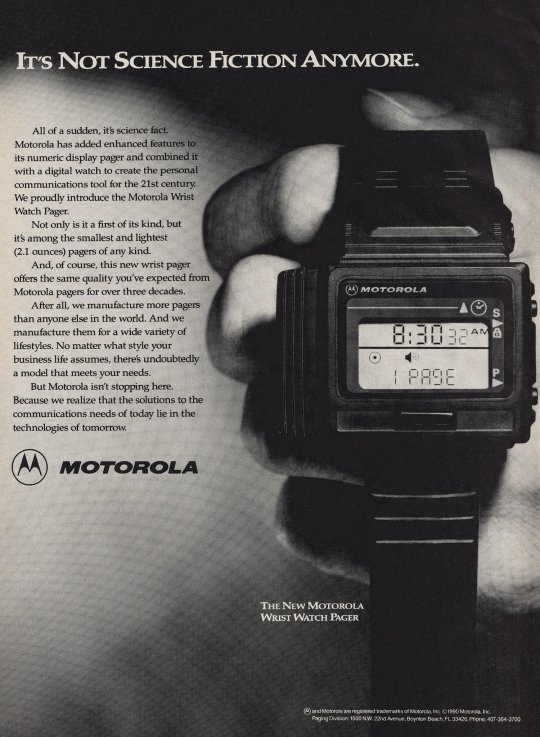
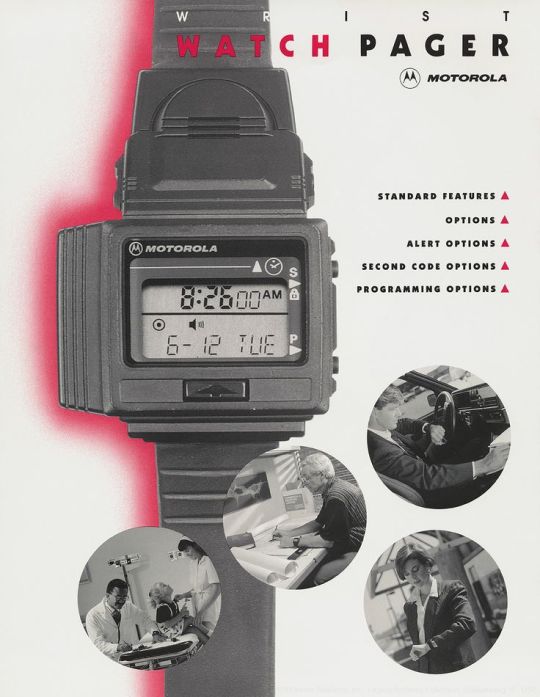

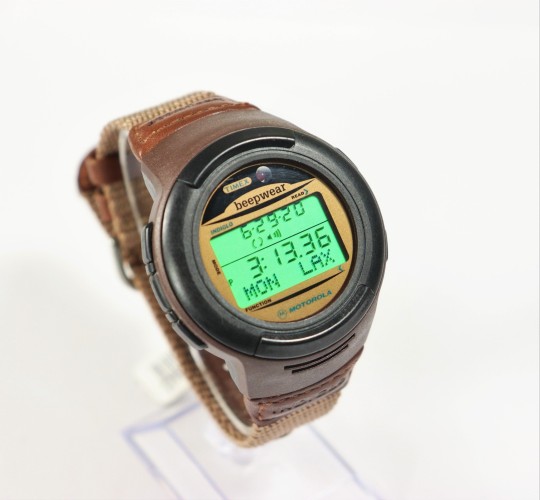

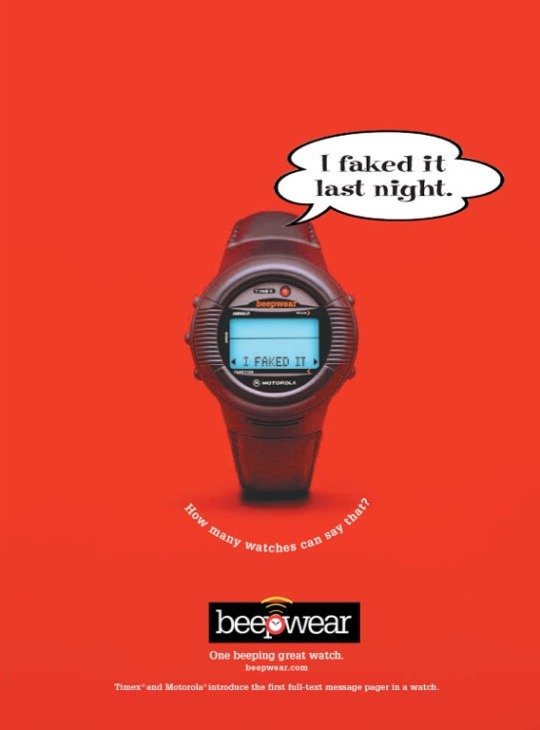

🇺🇲 Explore the Fascinating Fusion of Timekeeping and Communication: Unveiling the Pioneering Motorola and Timex Wristwatch-Pagers that Revolutionized Wearable Technology in the 1990s.
🤝 In 1990, Motorola Inc. made its first attempt to enter the market of electronic wristwatches with a built-in pager (similar devices at the same time were already produced by the Japanese companies Seiko and Casio). The device was called "Motorola Wrist Wach Pager". Since 1991, further production of the devices has been carried out jointly with the Timex Group Corporation under the name "The Timex Tracer Wrist Watch Pager".
👉 Since 1998, further development of the line of electronic watches with the participation of Motorola Inc. and Timex Group was associated with the high-tech "Timex Beepwear Datalink" series. These devices also continued the concept of wristwatch-pagers, but with the integration of the well-known Datalink data transmission platform, which integrates with desktop computer software.
➡️ The Datalink line was introduced in 1994 and was developed in conjunction with Microsoft Corporation as an alternative to conventional PDAs with added attributes such as water resistance and ease of programming. Taken together, all this made it possible to use the “Beepwear Datalink” watch as a full-fledged electronic organizer.
📟 The Beepwear Pager Watch epitomized the convergence of traditional wristwatches with cutting-edge communication capabilities. Introduced in the late 1990s, this innovative device redefined the concept of wearable tech, offering users unparalleled convenience and connectivity on the go.
📞 Equipped with pager functionality, the Beepwear Pager Watch allowed users to receive important notifications and messages directly on their wrist, eliminating the need for separate communication devices. With its sleek and compact design, it seamlessly integrated into everyday life, providing instant access to critical information wherever you went.
⌚️ Beyond its communication features, the Beepwear Pager Watch retained the timeless appeal of a classic timepiece, boasting a stylish and durable design that stood the test of time. With its reliable quartz movement and rugged construction, it was built to withstand the rigors of daily wear, ensuring longevity and reliability for its users.
⚙️ The "Beepware" series, as a joint product of the efforts of Timex Group and Motorola Inc. was patented, and the production of the devices was carried out by the newly created joint company "Beepwear Paging Products". The clock operated in the 900 MHz band. FLEX time was also used, which, if supported by the operator, could synchronize the clock time with the network time, and also automatically adjust to the owner's time zone.
🚀 The launch of the Timex Motorola Beepwear Pager Watch marked a significant milestone in the evolution of wearable technology, showcasing the potential for seamless integration of communication and timekeeping functions in a single device. As one of the pioneering products in this category, it paved the way for future innovations in the wearable tech industry, inspiring a new generation of smartwatches and wearable devices.
💔 However, already in 2002, Motorola Inc. was forced to carry out internal restructuring, including ceasing production and support of its own pagers.
💫 Today, the legacy of the Timex Motorola Beepwear Pager Watch lives on, remembered as a trailblazer in the realm of wearable technology. While newer devices may offer more advanced features, the Beepwear Pager Watch remains a symbol of innovation and ingenuity, reminding us of the transformative power of technology in shaping our lives.
#timetrek#brands#clock#watch#watches#time#companies#company#history#luxury watches#motorola#timex group#timex watches for men#timex#beepwear#pager#wristwatch#wrist watch#wristwatch pda#wristwatch pager#datalink#microsoft#smartwatch#digital watch#casio#seiko#made in usa#telecommunications#innovation#old gadgets
28 notes
·
View notes
Text
Can Open Source Integration Services Speed Up Response Time in Legacy Systems?
Legacy systems are still a key part of essential business operations in industries like banking, logistics, telecom, and manufacturing. However, as these systems get older, they become less efficient—slowing down processes, creating isolated data, and driving up maintenance costs. To stay competitive, many companies are looking for ways to modernize without fully replacing their existing systems. One effective solution is open-source integration, which is already delivering clear business results.
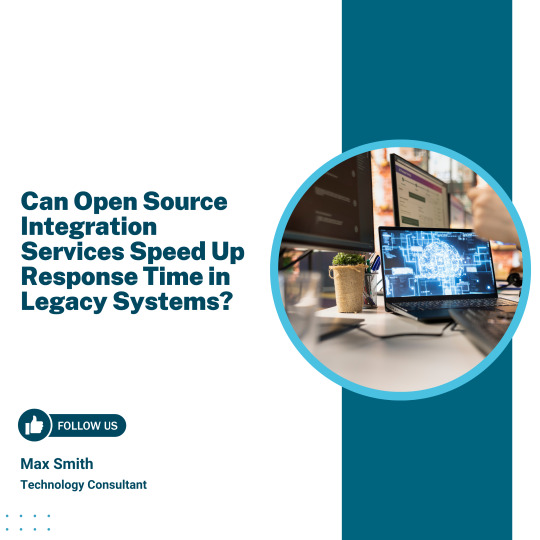
Why Faster Response Time Matters
System response time has a direct impact on business performance. According to a 2024 IDC report, improving system response by just 1.5 seconds led to a 22% increase in user productivity and a 16% rise in transaction completion rates. This means increased revenue, customer satisfaction as well as scalability in industries where time is of great essence.
Open-source integration is prominent in this case. It can minimize latency, enhance data flow and make process automation easier by allowing easier communication between legacy systems and more modern applications. This makes the systems more responsive and quick.
Key Business Benefits of Open-Source Integration
Lower Operational Costs
Open-source tools like Apache Camel and Mule eliminate the need for costly software licenses. A 2024 study by Red Hat showed that companies using open-source integration reduced their IT operating costs by up to 30% within the first year.
Real-Time Data Processing
Traditional legacy systems often depend on delayed, batch-processing methods. With open-source platforms using event-driven tools such as Kafka and RabbitMQ, businesses can achieve real-time messaging and decision-making—improving responsiveness in areas like order fulfillment and inventory updates.
Faster Deployment Cycles: Open-source integration supports modular, container-based deployment. The 2025 GitHub Developer Report found that organizations using containerized open-source integrations shortened deployment times by 43% on average. This accelerates updates and allows faster rollout of new services.
Scalable Integration Without Major Overhauls
Open-source frameworks allow businesses to scale specific parts of their integration stack without modifying the core legacy systems. This flexibility enables growth and upgrades without downtime or the cost of a full system rebuild.
Industry Use Cases with High Impact
Banking
Integrating open-source solutions enhances transaction processing speed and improves fraud detection by linking legacy banking systems with modern analytics tools.
Telecom
Customer service becomes more responsive by synchronizing data across CRM, billing, and support systems in real time.
Manufacturing
Real-time integration with ERP platforms improves production tracking and inventory visibility across multiple facilities.
Why Organizations Outsource Open-Source Integration
Most internal IT teams lack skills and do not have sufficient resources to manage open-source integration in a secure and efficient manner. Businesses can also guarantee trouble-free setup and support as well as improved system performance by outsourcing to established providers. Top open-source integration service providers like Suma Soft, Red Hat Integration, Talend, TIBCO (Flogo Project), and Hitachi Vantara offer customized solutions. These help improve system speed, simplify daily operations, and support digital upgrades—without the high cost of replacing existing systems.
2 notes
·
View notes
Text
Warehouse Buzzer System
How Electronic Message Boards Assist In Updating

Electronic message boards are fairly prevalent today, and their usage seems to be proliferating. Message boards in electronic kind properly interact swiftly upgraded company memoranda, final timetable modifications, and marketing, three fairly various applications providing one an idea of the breadth that this medium has gotten to. Herein we explore the phenomenon both generally and in regards to the power released when incorporated with an integrated clock system.
Electronic message boards derive from a lengthy background of open-air communication making use of indicators, billboards, marquees, and so on. Trick attributes were the layouts utilized and the feedback time for updating info. The most usual style entailed drawing on comprehensive personality collections, containing letters, numbers, and spelling, to create words, hanging them from hooks or resting them on wooden slats.
Posts were changed by hand, and updates were thus irregular. In time, updating was improved and somewhat automated using electronic control, such as seen with old baseball park scoreboards.
However, there was still the danger of lacking specific characters and being rendered unable to display all words in your message. This problem was addressed when the dot matrix selection was created, which stood for any type of character (in any type of typeface)-- also graphics-- with a rectangular pattern of on-or-off dots. These could be published on paper, yet a lot more effective was to present them in grids of light bulbs or on a screen.
Mapping formulas converted text into ranges of dots virtually instantaneously, and while drivers entered on a console, messages scrolled across the screen in essentially live. This system still required manual work, however the display screen tool was much easier to read, new, and updatable in a matter of moments. Whence the birth of electronic message boards that utilized light bulbs as the dots, or pixels.
Early light bulbs were incandescent, and were really the only choice; nonetheless, they had brief life-spans and prone to failing from shock. By the millenium, light producing diodes (LED) were a fully grown innovation and available in several shades, including white. Additionally, they outlived incandescent light bulbs by approximately 50 times, were not so breakable, and rapidly came to be the recommended part for message boards.
In time developers got extra creative with the tool and wanted to have more than one "on" shade to deal with. LEDs can fulfill this desire with their 3-in-1 mix of the 3 primary colors to synthesize white light; by choosing different sub-combinations you can obtain 7 various shades.
At some point, upgrading had to transition out of its humble manual origins. Now, textual info can be gotten in real time or gotten from data sources, and software is utilized to map the information right into matrices of (color-coded) dots that get buffered and presented quickly, effortlessly, and effortlessly. Graphics can be incorporated if they are mapped in advance.
Therefore, the modern digital boards are essentially automated, though there are provisions for bypassing scheduled programs with brand-new content in emergencies. Synchronous timekeeping systems manage everything.
An intriguing advancement is the integration of sound signals with the visual information being displayed on a sign in either textual or visual kind. It is popular that a close coordination of both kinds of sensuous stimulations has a tendency to get the message throughout many successfully. It's not a combination of both elements into tune, yet rather the use of sounds (bells, tones, whistles) as focus grabbers to change emphasis of the target market to what the board is showing, whether it be information or other timely information. synchronized clocks for hospitals
The world has actually expanded tired with fixed messaging in regards to both web content and style. Things need to be vibrant to sign up, and this needs constant educational updates. With this article we have seen exactly how electronic message boards promote updating.
youtube
2 notes
·
View notes
Text
Buy Apple ID Accounts What Is Apple ID Accounts?Buy Apple ID Accounts. An Apple ID is a user account that allows access to various Apple services and products, such as the App Store, iCloud, iTunes, Apple Music, and more. It serves as a single sign-in across all Apple devices and services. The account is tied to the user’s email address and is used to manage personal information, make purchases, and synchronize data across devices like iPhones, iPads, Macs, and more.Key features of an Apple ID account include:Access to Apple Services: With an Apple ID, users can access Apple services like iCloud for data storage, Apple Music for streaming, iTunes for media purchases, and the App Store for downloading apps.Device Synchronization: Apple ID allows users to sync their settings, photos, contacts, and apps across all their Apple devices using iCloud.Security Features: Apple ID comes with security features like two-factor authentication (2FA) to protect against unauthorized access.Purchase Management: Users can store payment information and make purchases through Apple’s digital stores, including apps, music, movies, and other content.Backup and Recovery: With iCloud, Apple ID provides a way to back up device data and restore it if the device is lost or replaced.Find My iPhone/Mac: This feature helps users locate their devices in case they are lost or stolen by using their Apple ID credentials.Essentially, an Apple ID acts as a digital identity within Apple’s ecosystem, allowing seamless use of Apple’s hardware, software, and services.
24 Hours Reply/Contact Telegram: @smmvirals24 WhatsApp: +6011-63738310 Skype: smmvirals Email: [email protected]
2 notes
·
View notes
Text
What Is Apple ID Accounts?
Buy Apple ID Accounts. An Apple ID is a user account that allows access to various Apple services and products, such as the App Store, iCloud, iTunes, Apple Music, and more. It serves as a single sign-in across all Apple devices and services. The account is tied to the user’s email address and is used to manage personal information, make purchases, and synchronize data across devices like iPhones, iPads, Macs, and more.
Key features of an Apple ID account include:
Access to Apple Services: With an Apple ID, users can access Apple services like iCloud for data storage, Apple Music for streaming, iTunes for media purchases, and the App Store for downloading apps.
Device Synchronization: Apple ID allows users to sync their settings, photos, contacts, and apps across all their Apple devices using iCloud.
Security Features: Apple ID comes with security features like two-factor authentication (2FA) to protect against unauthorized access.
Purchase Management: Users can store payment information and make purchases through Apple’s digital stores, including apps, music, movies, and other content.
Backup and Recovery: With iCloud, Apple ID provides a way to back up device data and restore it if the device is lost or replaced.
Find My iPhone/Mac: This feature helps users locate their devices in case they are lost or stolen by using their Apple ID credentials.
Essentially, an Apple ID acts as a digital identity within Apple’s ecosystem, allowing seamless use of Apple’s hardware, software, and services.
24 Hours Reply/Contact Telegram: @smmvirals24 WhatsApp: +6011-63738310 Skype: smmvirals Email: [email protected]
2 notes
·
View notes
Text
Easy2Sync for Files
Easy2Sync for Files is a program created to synchronize office files, images, movies, and other data from one location to another. learn how to use Easy2Sync for Files. What is Easy2Sync for Files Easy2Sync for Files is a file synchronization tool on Windows 10, 8.1, 7; Vista(x32,x64); XP(x42,x64), with it we can build any number of unattended slot manager.syncaroofolios from WipeInfoFileSystem…
#Data Syncing#Easy2Sync#Easy2Sync Features#Easy2Sync Setup#file backup#File Management#file synchronization#File Synchronization Software#file transfer#folder synchronization#Local and Network Sync#Sync Files Across Devices#Sync Software#Sync Tools for Windows#Windows File Sync
0 notes
Text
Establishing and Implementing the President's "Department of Government Efficiency"
Issued January 20, 2025.
By the authority vested in me as President by the Constitution and the laws of the United States of America, it is hereby ordered:
Section 1. Purpose. This Executive Order establishes the Department of Government Efficiency to implement the President's DOGE Agenda, by modernizing Federal technology and software to maximize governmental efficiency and productivity.
Sec. 2. Definitions. As used in this order:
(a) "Agency" has the meaning given to it in section 551 of title 5, United States Code, except that such term does not include the Executive Office of the President or any components thereof.
(b) "Agency Head" means the highest-ranking official of an agency, such as the Secretary, Administrator, Chairman, or Director, unless otherwise specified in this order.
Sec. 3. DOGE Structure. (a) Reorganization and Renaming of the United States Digital Service. The United States Digital Service is hereby publicly renamed as the United States DOGE Service (USDS) and shall be established in the Executive Office of the President.
(b) Establishment of a Temporary Organization. There shall be a USDS Administrator established in the Executive Office of the President who shall report to the White House Chief of Staff. There is further established within USDS, in accordance with section 3161 of title 5, United States Code, a temporary organization known as "the U.S. DOGE Service Temporary Organization." The U.S. DOGE Service Temporary Organization shall be headed by the USDS Administrator and shall be dedicated to advancing the President's 18-month DOGE agenda. The U.S. DOGE Service Temporary Organization shall terminate on July 4, 2026. The termination of the U.S. DOGE Service Temporary Organization shall not be interpreted to imply the termination, attenuation, or amendment of any other authority or provision of this order.
(c) DOGE Teams. In consultation with USDS, each Agency Head shall establish within their respective Agencies a DOGE Team of at least four employees, which may include Special Government Employees, hired or assigned within thirty days of this Order. Agency Heads shall select the DOGE Team members in consultation with the USDS Administrator. Each DOGE Team will typically include one DOGE Team Lead, one engineer, one human resources specialist, and one attorney. Agency Heads shall ensure that DOGE Team Leads coordinate their work with USDS and advise their respective Agency Heads on implementing the President's DOGE Agenda.
Sec. 4. Modernizing Federal Technology and Software to Maximize Efficiency and Productivity. (a) The USDS Administrator shall commence a Software Modernization Initiative to improve the quality and efficiency of government-wide software, network infrastructure, and information technology (IT) systems. Among other things, the USDS Administrator shall work with Agency Heads to promote inter-operability between agency networks and systems, ensure data integrity, and facilitate responsible data collection and synchronization.
(b) Agency Heads shall take all necessary steps, in coordination with the USDS Administrator and to the maximum extent consistent with law, to ensure USDS has full and prompt access to all unclassified agency records, software systems, and IT systems. UDSD shall adhere to rigorous data protection standards.
(c) This Executive Order displaces all prior executive orders and regulations, insofar as they are subject to direct presidential amendment, that might serve as a barrier to providing USDS access to agency records and systems as described above.
Sec. 5. General Provisions. (a) Nothing in this order shall be construed to impair or otherwise affect:
(i) the authority granted by law to an executive department or agency, or the head thereof; or
(ii) the functions of the Director of the Office of Management and Budget relating to budgetary, administrative, or legislative proposals.
(b) This order shall be implemented consistent with applicable law and subject to the availability of appropriations.
(c) This order is not intended to, and does not, create any right or benefit, substantive or procedural, enforceable at law or in equity by any party against the United States, its departments, agencies, or entities, its officers, employees, or agents, or any other person.
#us government#us politics#executive orders#department of government efficiency#DOGE#united states digital service#USDS#united states doge service
3 notes
·
View notes
Text
#data migration#data management#big data#data protection#file synchronization software#cloud solutions#linux#data orchestration#Government Data Management#file replication#Linux file transfer#secure data backup#cloud computing#cloud software
0 notes
Text
Normally I just post about movies but I'm a software engineer by trade so I've got opinions on programming too.
Apparently it's a month of code or something because my dash is filled with people trying to learn Python. And that's great, because Python is a good language with a lot of support and job opportunities. I've just got some scattered thoughts that I thought I'd write down.
Python abstracts a number of useful concepts. It makes it easier to use, but it also means that if you don't understand the concepts then things might go wrong in ways you didn't expect. Memory management and pointer logic is so damn annoying, but you need to understand them. I learned these concepts by learning C++, hopefully there's an easier way these days.
Data structures and algorithms are the bread and butter of any real work (and they're pretty much all that come up in interviews) and they're language agnostic. If you don't know how to traverse a linked list, how to use recursion, what a hash map is for, etc. then you don't really know how to program. You'll pretty much never need to implement any of them from scratch, but you should know when to use them; think of them like building blocks in a Lego set.
Learning a new language is a hell of a lot easier after your first one. Going from Python to Java is mostly just syntax differences. Even "harder" languages like C++ mostly just mean more boilerplate while doing the same things. Learning a new spoken language in is hard, but learning a new programming language is generally closer to learning some new slang or a new accent. Lists in Python are called Vectors in C++, just like how french fries are called chips in London. If you know all the underlying concepts that are common to most programming languages then it's not a huge jump to a new one, at least if you're only doing all the most common stuff. (You will get tripped up by some of the minor differences though. Popping an item off of a stack in Python returns the element, but in Java it returns nothing. You have to read it with Top first. Definitely had a program fail due to that issue).
The above is not true for new paradigms. Python, C++ and Java are all iterative languages. You move to something functional like Haskell and you need a completely different way of thinking. Javascript (not in any way related to Java) has callbacks and I still don't quite have a good handle on them. Hardware languages like VHDL are all synchronous; every line of code in a program runs at the same time! That's a new way of thinking.
Python is stereotyped as a scripting language good only for glue programming or prototypes. It's excellent at those, but I've worked at a number of (successful) startups that all were Python on the backend. Python is robust enough and fast enough to be used for basically anything at this point, except maybe for embedded programming. If you do need the fastest speed possible then you can still drop in some raw C++ for the places you need it (one place I worked at had one very important piece of code in C++ because even milliseconds mattered there, but everything else was Python). The speed differences between Python and C++ are so much smaller these days that you only need them at the scale of the really big companies. It makes sense for Google to use C++ (and they use their own version of it to boot), but any company with less than 100 engineers is probably better off with Python in almost all cases. Honestly thought the best programming language is the one you like, and the one that you're good at.
Design patterns mostly don't matter. They really were only created to make up for language failures of C++; in the original design patterns book 17 of the 23 patterns were just core features of other contemporary languages like LISP. C++ was just really popular while also being kinda bad, so they were necessary. I don't think I've ever once thought about consciously using a design pattern since even before I graduated. Object oriented design is mostly in the same place. You'll use classes because it's a useful way to structure things but multiple inheritance and polymorphism and all the other terms you've learned really don't come into play too often and when they do you use the simplest possible form of them. Code should be simple and easy to understand so make it as simple as possible. As far as inheritance the most I'm willing to do is to have a class with abstract functions (i.e. classes where some functions are empty but are expected to be filled out by the child class) but even then there are usually good alternatives to this.
Related to the above: simple is best. Simple is elegant. If you solve a problem with 4000 lines of code using a bunch of esoteric data structures and language quirks, but someone else did it in 10 then I'll pick the 10. On the other hand a one liner function that requires a lot of unpacking, like a Python function with a bunch of nested lambdas, might be easier to read if you split it up a bit more. Time to read and understand the code is the most important metric, more important than runtime or memory use. You can optimize for the other two later if you have to, but simple has to prevail for the first pass otherwise it's going to be hard for other people to understand. In fact, it'll be hard for you to understand too when you come back to it 3 months later without any context.
Note that I've cut a few things for simplicity. For example: VHDL doesn't quite require every line to run at the same time, but it's still a major paradigm of the language that isn't present in most other languages.
Ok that was a lot to read. I guess I have more to say about programming than I thought. But the core ideas are: Python is pretty good, other languages don't need to be scary, learn your data structures and algorithms and above all keep your code simple and clean.
#programming#python#software engineering#java#java programming#c++#javascript#haskell#VHDL#hardware programming#embedded programming#month of code#design patterns#common lisp#google#data structures#algorithms#hash table#recursion#array#lists#vectors#vector#list#arrays#object oriented programming#functional programming#iterative programming#callbacks
20 notes
·
View notes